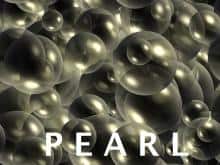Introduction
The Dutch decision tree on leaching from soil has been re-designed to be more in line with EU guidelines on the assessment of the leaching potential of substances. EU procedures aim at protecting groundwater against contamination with pesticides above the level of 0.1 µg/L, with special regard to the groundwater as a source for drinking water. The Netherlands has adopted the following operational criterion: The long-term median concentration of an active ingredient or its relevant metabolites at 10 m depth should not exceed the value of 0.1 µg/L under at least 90% of the area of potential use of the substance. The decision tree consists of three tiers:
- In the first tier, the FOCUS Kremsmünster scenario, is used to identify substances with a negligible leaching risk;
- The second tier involves calculations with the GeoPEARL model, which calculates the potential of a substance to reach the uppermost groundwater under the area of use. If the minimal information from the dossier is not sufficient to demonstrate acceptable leaching potential, the applicant may use information from additional laboratory and field studies (including lysimeter studies);
- The third tier evaluates the behaviour of the substance in the saturated part of the soil, up to a depth of 10 m below soil surface;
Because drinking water abstraction areas are generally in more vulnerable regions, special attention is given to the protection of drinking water abstraction areas.
Reports
An overview of the new decision tree for the evaluation of pesticide leaching from soils is given in RIVM report 601450019 .
The decision tree was evaluated by assessing the leaching of bentazone, MCPA and mecoprop to groundwater, using the new proposals for evaluating sorption and degradation studies (Boesten, et al. 2015 ) and published in RIVM Report 2015-0095 .
Tier 1 of the decision tree
In tier 1, the FOCUS Kremsmünster scenario is used to distinguish substances with a small or negligible risk of leaching from substances with some leaching potential on the basis of basic dossier information. The evaluation in the first tier is without regard to the area of use. Tier 1 is skipped if one of the following criteria is met:
- the vapour pressure of the substance at 20 °C is higher than 10-4 Pa and the substance is injected or incorporated into the soil,
- the geometric mean DegT50 under reference conditions is shorter than 10 days and the geometric mean Kom is smaller than 10 L/kg.
Leaching estimates can be obtained with the FOCUS PEARL model.
Tier 2 of the decision tree
The second tier of the decision tree evaluates in greater detail whether a substance, which according to the evaluation in the first tier has some potential to leach to groundwater, indeed has a potential to leach to groundwater above the threshold level. The second tier is described in section 2.3.2. of RIVM report 601450019 , and can roughly be divided into two parts:
- a part using the GeoPEARL model. GeoPEARL is a spatially-distributed model, calculating the leaching potential of a substance for the area of potential use. A detailed description of the concepts of GeoPEARL is given in RIVM report 716601007, a user-manual is provided in RIVM report 716601008. Tier 2 often starts with GeoPEARL calculations, using input from the basic dossier. In a second step, the applicant may use laboratory, lysimeter and field data to refine the GeoPEARL simulations. Interpretation of field and lysimeter experiments may also show that the leaching of the substance cannot be simulated with the (Geo)PEARL model. In these cases, the ratio of the calculated leaching and measured leaching can be used to adjust the 90th percentile of the leaching concentration obtained by GeoPEARL, see RIVM report 601506007 for details.
- a part in which monitoring data of the uppermost groundwater are considered. This latter part is described in detail in RIVM report 601450015. The result of the evaluation of the monitoring data may overrule the evaluation based on GeoPEARL, provided that all criteria, stated in that report, are met;
Tier 3 of the decision tree
Tier 3 considers the behaviour of the substance in the water-saturated zone of the soil, i.e. the zone between 1 and 10 m below soil surface. A substance enters Tier 3 when the target concentration as calculated with GeoPEARL at the end of tier 2 was above 0.1 ug/L or when monitoring in the uppermost groundwater showed a concentration above 0.1 ug/L. Tier 3 is divided into two major parts:
- a part which considers behaviour studies with soil materials from the water-saturated zone. The applicant can perform transformation and sorption studies in materials obtained from the saturated zone between 1 and 10 m depth and show that under all chemical conditions, oxic to methanogenic, transformation is fast enough to reduce the concentration below the level of 0.1 ug/L. For details, please refer to RIVM report 715801005.
- a part which considers monitoring data obtained from a depth of 10 m or more below soil surface. The procedure for the monitoring and the interpretation of the results is described in detail in RIVM report 601450015.
Special consideration for drinking water abstraction areas
Groundwater protection areas are, on average, more vulnerable to pesticide leaching than other agricultural areas (see Alterra report 1041). For selected hypothetical substances, the calculated GeoPEARL target concentration was considerably higher for the ensemble of groundwater protection areas than for the agricultural area, dependent on the crop for which the calculations were run. Therefore, a safety factor is introduced for these areas: a plant protection product cannot be used in groundwater protection areas if the calculated target concentration for the area of use is above 0.01 ug/L. Additional information on the behaviour in groundwater protection areas might, however, demonstrate the possible safe use and overrule the safety factor.

